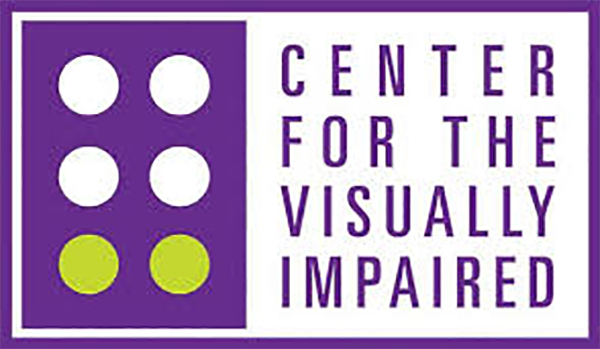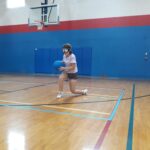Every Saturday kids and their parents gather at the soccer or baseball field to play and cheer on their favorite team sport. But a child with a visual impairment is often on the sidelines…until now!
Goalball is a thrilling team sport played by athletes with vision loss of all kinds. On Saturday, March 18, join CVI and Georgia Blind Sports for a free demonstration of the Paralympic sport goalball. We will also learn about other athletic opportunities for kids with visual impairments of all ages.
Here is a brief primer on the sport that can keep kids with vision loss engaged in physical activity and give them the chance to be part of a competitive team.
History
Goalball was created in the years after World War II to help rehabilitate soldiers who had lost their vision. In the decades that followed, what began as a rehabilitation exercise developed into a vibrant and fiercely competitive game. Athletes with visual impairment drove this transformation, organizing friendly matches and pioneering the techniques and strategies used by players today. In 1976, goalball was introduced on the national stage at the Paralympic Games. Two years later, the first goalball World Championships were held in Austria, where the game originated.
How to Play
The rules of goalball are simple. Two teams, each with three players, try to throw or roll the ball into the opposing team’s goal while defending their own. The ball contains small bells and has openings so that the sounds of the bells can be heard as the ball travels around the court and between players. Goalball is played on a court about the size of a volleyball court, and the goal extends its full length. Tactile tape marks the court’s layout, helping players identify their position.
Since degrees of vision loss vary between players, eyeshades and eyepatches are worn to level the playing field. Only six people can play at a time, but additional players typically act as substitutes during gameplay.
Dynamic and fast-moving, goalball requires both strength and agility. Throwing, blocking, and diving for the jingling ball relies on players’ hand-ear coordination, an essential skill for people with visual impairment that allows them to locate and interact with objects around them. Individual ability isn’t enough, though; as in any team sport, players must work together. The best teammates are so in sync that they can almost reach each other’s minds.
Notable CVI Players
CVI is proud to have been home to a number of nationally and internationally ranked goalball players!
CVI alumna Ali Lawson has won 12 gold medals and 3 national titles, and played as a resident athlete of the Goalball Center of Excellence at Turnstone in Fort Wayne. She first discovered goalball at CVI summer camp as a sophomore in high school.
Matt Simpson, who attended CVI’s STARS program as a child, has represented the USA at the Paralympics twice: in 2016, when the men’s team won a silver medal, and again in 2020. Matt also won two silver medals representing the US at the Parapan American Games in 2015 and 2019. His father, Hal Simpson, founded the Georgia Blind Sports Association and continues to help organize goalball activities for CVI students.
Amanda Dennis also received services at CVI, where first learned about goalball. She is a three-time Paralympian who represented USA women’s team in 2014, 2016, and 2020. At the 2016 Paralympic Games, she helped her team with the bronze medal; in 2020, they won silver. Amanda also played with the women’s team at the 2014 World Championships, where came in first place.
Could your child be the next Ali, Matt, or Amanda? Join us on Saturday, March 18 to find out! This free event will be at Oakland Meadow School in Lawrenceville from 2-4 pm. RSVP to Nick Reynolds at nreynolds@cviga.org, or call 404-602-4331.


